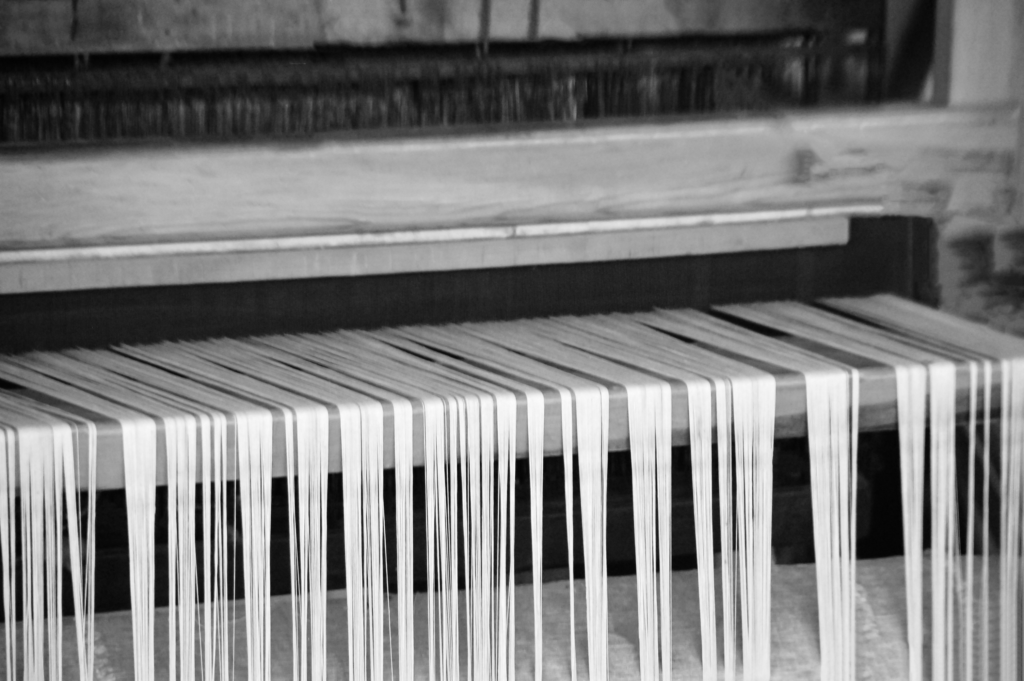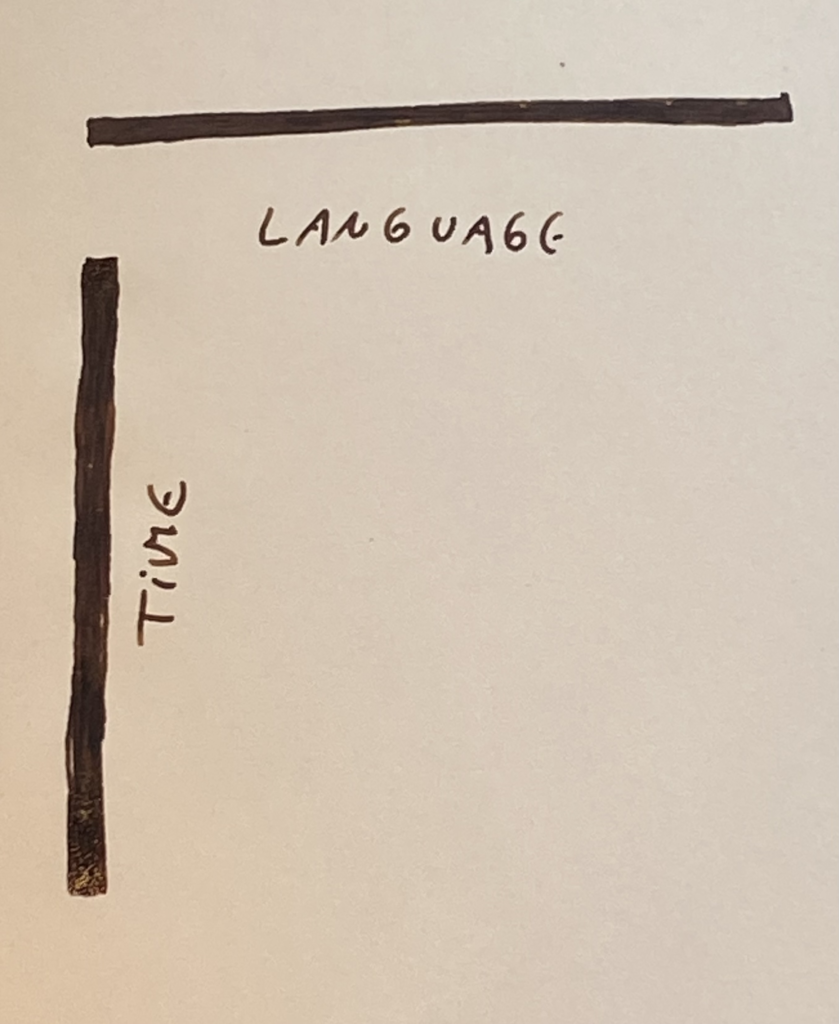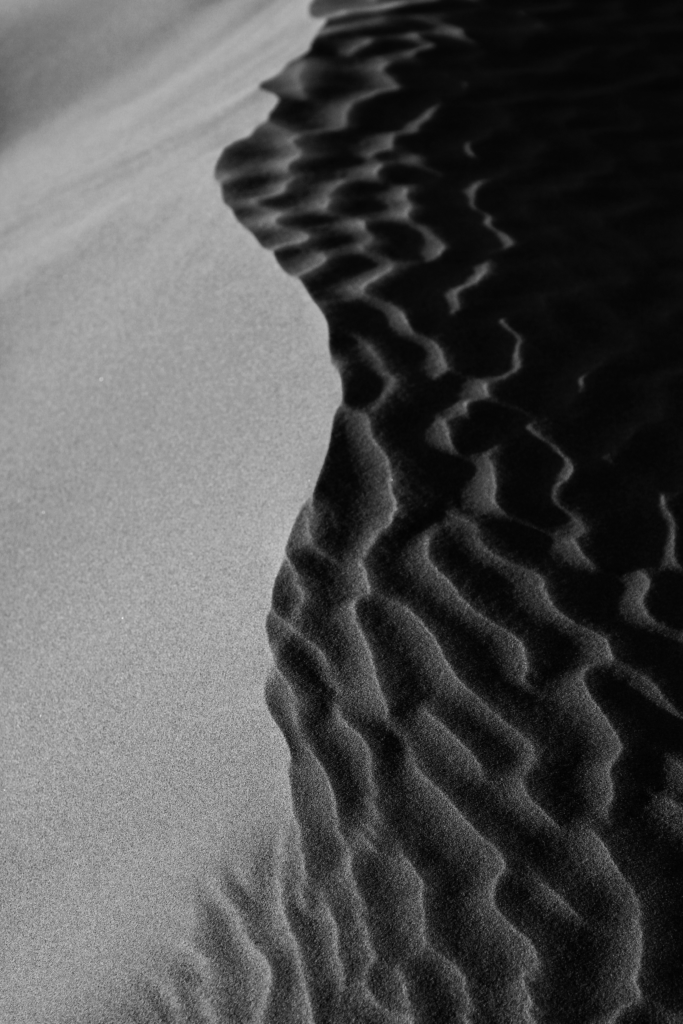
Source: Pixabay
Weaving has been a metaphor for the verbal arts since ancient times. There is an important difference between modern and ancient weaving though. Fabrics in ancient Greece were made by first weaving a starting border. This is a band that carries the warp threads for the fabric, and is later installed on the loom. The Romans called this way of installing the vertical threads ordior. Our word ‘order’ stems from this root, as does our concepts of ‘word order’, syntax, or language as an ‘orderly’ system. The metaphor of weaving includes the visualisation of a frame, the warp-weighted loom. Contemporary scholars refer to its vertical and horizontal axes, the warp and the weft framed by the wood of the loom and the edge of the fabric. This is the first of three frames I address here in chronological order.

Source: Dostoevsky 1872
When the shape of speech is converted into written language another frame emerges. Then we imagine language as words on a page. The border of the page makes for a second frame. Within this visualisation language flows along a timeline, that ultimately runs vertically along the page. With the turn of each page, a new vertical axis begins, as our eyes follow the text to the bottom of the page. It is easy to image language within such Cartesian frames, frames of reference composed of axes that intersect at right angles.

Together with the architect Emma-Kate Matthews I tried to imagine the high-dimensional nature of language through its representation in 3D. For this we used software designed for gaming and video-animation. We created a digital weave of linguistic fibers and projected curved lines that somewhat capture language’s dynamic nature. This is a third frame I ought to address, again Cartesian, with the 3D images constructed via 3 axes that intersect at right angles.

A FABRIC-LIKE DIGITAL IMAGE OF NATURAL SPOKEN LANGUAGE
Source: Pillen & Matthews 2022, https://www.nature.com/articles/s41599-022-01089-5
The software we used was Grasshopper integrated with Rhino’s 3-D modelling tools. Alongside a metaphorical loom, and the confines of the page, this third now digital frame contains language in a particular way. What we now call a Cartesian frame is a reference to the French philosopher, scientist, and mathematician, René Descartes (1596-1650). In itself it is an arbitrary cultural tool; a metaphor that co-exists with ancient notions of the verbal arts as a form of weaving. We can’t lose sight of the fact that ancient metaphors also included plaiting, carpentry, or language simply visualised as two intertwining strands. The ‘ordior’ of the loom, an ‘order’ of words on a page and their digital equivalents lend themselves well to Cartesian forms of thinking and representation. This leads me to the question of how we can honour non-Cartesian elements within the architecture of language? An organic multi-dimensionality of natural language that perhaps cannot be framed?

Source: Desert sand texture, Pixabay
References
Guilleux, N. (2016). Of metaphorical matrices and their networks: Generally speaking, and in the field of textile activities. In Fanfani, G., Harlow, M. & Nosch, M.L (Eds.) Spinning tales and the song of the loom. The use of textiles, clothing and cloth production as metaphor, symbol and narrative device in Green and Latin literature. Oxbow Books.
p. 12
Harlizius-Klück, E., Fanfani, G. (2016). (B)orders in ancient weaving and archaic Greek poetry. In Fanfani, G., Harlow, M. & Nosch, M.L (Eds.) Spinning tales and the song of the loom. The use of textiles, clothing and cloth production as metaphor, symbol and narrative device in Green and Latin literature.(pp. 61-99)Oxbow Books.
p. 69
Pillen, A & EK Matthews (2022). Natural Language Modelled and Printed in 3D: A Multi-disciplinary Approach. Humanities and Social Sciences Communications (Nature Portfolio) 9: 72.
Sources Images
https://pixabay.com/photos/loom-a-thread-needlework-weaving-4950158
Dostoevsky, F. 1872 [2013]. The possessed. Golgotha Press.
p.1
https://pixabay.com/photos/desert-sand-texture-pattern-shadow-7915031